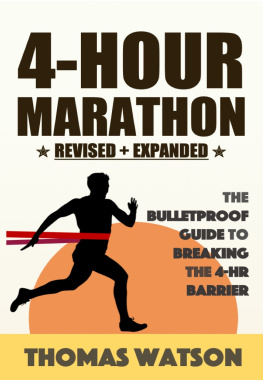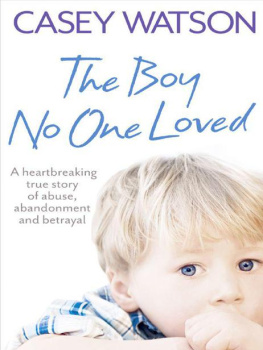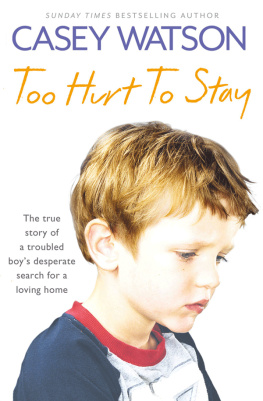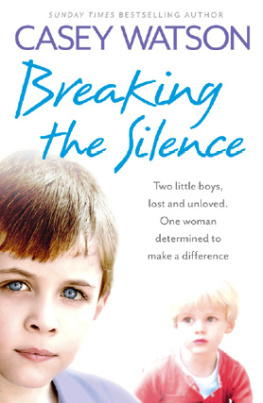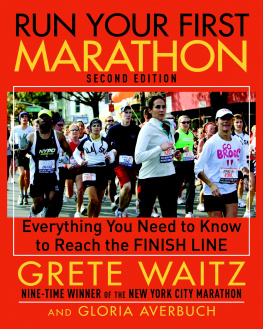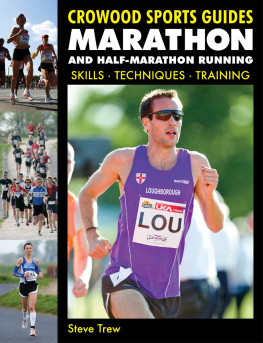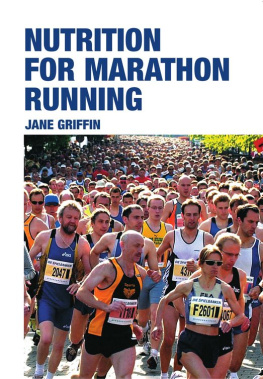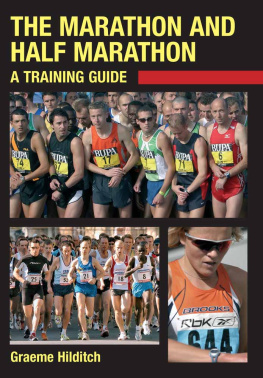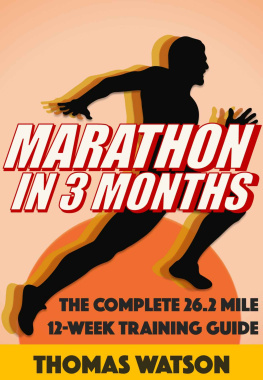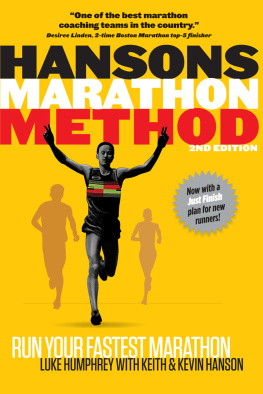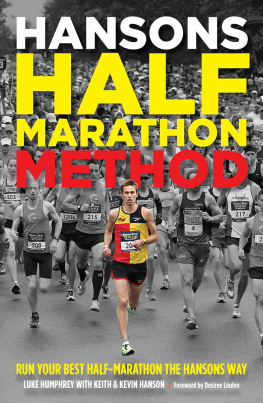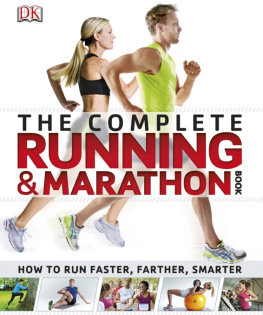4-hour Marathon:
The Bulletproof Training Guide for Breaking The 4-hour Barrier
Thomas Watson
Published internationally by Broadsea Press
Thomas Watson
Terms and Conditions:
The purchaser of this book is subject to the condition that he/she shall in no way resell it, nor any part of it, nor make copies of it to distribute freely.
Medical Disclaimer: all information in this publication is the advice and recommendations of the author, and is not meant to replace that of a medical professional. Before partaking in any training or physical activity, the reader should consult with their medical professional.
Table of Contents
Preface: Who This Book Is For
First of all, thanks for purchasing the expanded and updated edition of 4-Hour Marathon ! The first edition has now helped thousands of runners achieve their marathon goals, which has been a great response. From conversations with readers and runners, Ive taken the opportunity to revise the books layout and spend more time focussing on the core 20-week training schedule the objective has been to make a more concentrated and robust regime for runners to follow.
A quick note on the purpose and target audience of this book.
This book is written for anyone who is looking to run a marathon in under four hours.
If you are looking to simply run a marathon, with no specific time objective, youll probably find some useful information inside but youre not the target of this book.
Likewise, if youre aiming to run a three-hour marathon, Id recommend looking elsewhere for more specific resources.
*
This book has been expressly written with a just under four-hour finishing time in mind.
Why?
When I started my first marathon journey, I found the amount of information available online to be overwhelming.
For every important topic I researched in my marathon preparation (such as pace, training, longest runs, or nutrition), Id find half-a-dozen different recommendations often contradicting each other.
My aim with this book is to improve that signal-to-noise ratio, and map out a road-tested path to a sub-4-hr marathon. Instead of offering a generalised guide to marathons, Ive targeted one specific goal beating four hours and worked backwards from there to create a comprehensive plan.
The training plan included in Chapter 3 gives a detailed 20-week roadmap, explaining exactly what your training regime should be every day. You are free to modify the plan to suit your own needs, of course. But the intention has been to provide something that is a focussed path to 4-hr success, as opposed to a collection of general tips.
In the past seven years Ive read practically every book worth reading on marathon running and training, and applied the knowledge within to complete dozens of marathons myself. Ive since used that knowledge and expertise to develop training plans and guides through my website, which have now been downloaded and implemented by thousands of runners.
*
This book is not designed for people who have never run before.
Before commencing the training method presented in this book, you should ideally have been jogging or running for at least one year. You should be able to complete a 3 5 mile (5 - 8 km) run without stopping.
The principle training plan Ive provided is 20 weeks long, cumulating in the marathon itself. This means that from the first week youll be expected to run four times per week, with a seven-mile slow run at the end of the week.
If you have doubts about whether you can complete the first week, check out the complete training plan at the back of this book. Try it out if you find it too taxing, you may wish to find a more achievable goal, and come back to the 4-hr marathon when youre ready.
Having said all of the above, there are plenty of exceptions to the rule out there. Ive met loads of outliers people who run their first marathon within a few months of buying a pair of running shoes. Obviously, having an athletic background helps if youre a non-runner.
So just because you havent been pounding the pavements for years doesnt mean a four-hour marathon is out with your reach. But bear in mind, the less running experience you have, the more challenges youll face in training and maintaining the 4-hr pace.
*
This book is for both first-time marathon runners and repeat offenders.
The book lays out the complete path you need to follow, from training to what gear to buy. That being said, its unlikely that all readers will come to the table with the same amount of running experience, and that can be a problem for a comprehensive guide like this one.
For new runners, the feeling of being overwhelmed by so much information - and the scale of the task at hand - is quite common. For this reason, Ive kept the book concise. I explain the importance and background behind the method I propose, but have tried to avoid unnecessary discussion or irrelevant information. This book is a how-to guide for success, not a history of marathons tome.
For the more experienced runners, I know myself that reading swathes of information you already are familiar with can feel like youre wasting your time. It doesnt matter how valid some the information is, its easy to become impatient very quickly. Id ask you to stick with it, or simply skip a section which is useful to beginners but which you dont need any help with (such as buying running shoes). Otherwise Chapter 3 (The Training Plan) should be followed regardless of your previous running history.
If theres anything you feel I didnt explain comprehensively enough, youd be a total hero if you emailed me at and explained where you feel I couldve done better.
I ntroduction
Why Four Hours?
If you took a random sample of a hundred people you know regardless of age, fitness level, background, etc. then the truth is that the majority of them would be capable of covering 26.2 miles on foot.
Most of them wouldnt be very fast in fact, most of them would walk almost all the way. Theyd stop for long breaks. A few of them would get injured or get too tired. Some would be physically incapable of completing the distance, but most would grumblingly manage to finish it. Most of us can walk for a long time, after all. This would just be a very long walk.
This is where marathons come in.
With marathons, the aim is to run .
And not just run, but run continuously . If you get tired, you might have to walk a little. But for most of us, the whole point of committing to a marathon is to try and run the whole thing.
But what is so significant about four hours?
It takes most well-prepared marathon runners somewhere between three and five hours to complete the course.
The average marathon finishing time is 4:21:291 (the average womens time was 4:39:09 while its a little slower, it is quickly catching up with the mens time).
This means that anyone breaking the four-hour benchmark is not just a marathon runner theyre a pretty good marathon runner. Over 65% of marathon runners are still on the road at the 4-hr mark. If you want to be in that top 35%, youve got train for it.
Running a marathon in under four hours means youve sustained an average pace of at least 6.55 miles per hour for 26.2 miles its a badge of honour that shows not just endurance, but a good level of underlying fitness and training behind it.
The four-hour benchmark has become an important line in the sand, it can be said. The difference between a 3hr 59min finishing time and 4hr 1min is a lot more than two minutes if youre a marathon runner.
I ran my first marathon in 3 hours 58mins. The first half of the marathon had been a breeze, taking me 1 hour 40 mins I thought this is great, Im going to cruise round .
Next page
